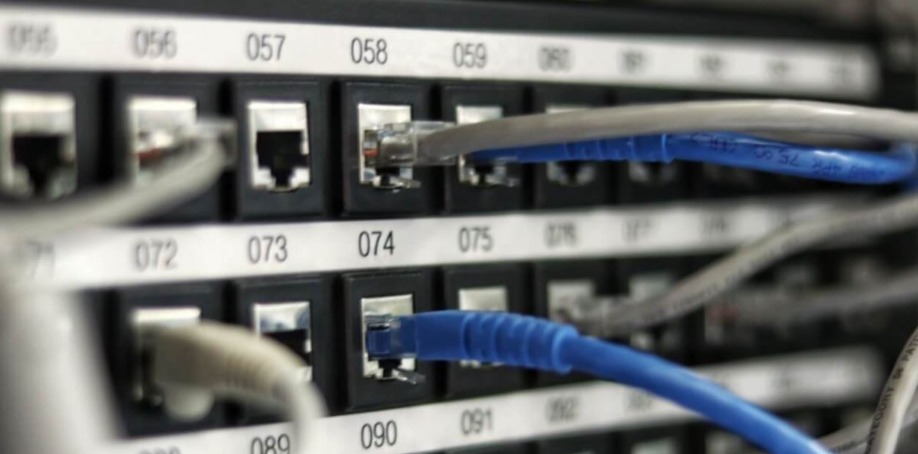
Audio over Internet Protocol (AoIP) is transforming the professional audio industry. Live events companies, broadcasters and many other professionals are adopting the technology. It's helping to dissolve the traditional barriers between audio, video and other inputs, which then pushes all of these industries toward a single scalable network. If you’re new to AoIP, a good place to start is to understand the different AoIP standards and systems in place right now.
What Is AoIP?: An Overview
Audio networking systems built around internet protocols enable data to be passed between microphones receivers via regular network equipment such as routers, switches and firewalls, says Artel VP of Product Management Rafael Fonseca. Audio sent over IP can also work with video and other formats also sent over the same protocol.
One of the problems with traditional systems is that the sources and the destinations must be close to one another, notes the team at PreSonus. Take a live music performance, for instance. The stage box that connects the mics and amps needs to be located on the stage alongside the musicians. The feed from the stage box must then run the length of the venue to the mixer.
“In a distributed audio network, each musician could have their own node on the network, potentially,” the PreSonus team writes. “Multiple networked stage boxes can be spread around the stage, making the analog cable runs as short as possible to minimize signal degradation. Take this concept a step further, and multiple sources can be spread throughout a large facility, each sitting on the network to be sent to many mixers on the network, not just the one at front-of-house.”
The AV industry has been slower than others to adopt IP-based systems, says the team at HEDD. That’s because IP systems have traditionally not had to deliver information in real time. But recent developments, such as Gigabit switches, have made it both possible — and beneficial — for audio professionals to switch to AoIP systems.
“Besides the tremendous cost-saving effect on equipment, network-based solutions for audio delivery hold the potential of enabling broadcasters, recording studios, and live venues to leverage their existing infrastructure and to achieve greater flexibility in terms of set-up, network configuration, and content sharing.”
AoIP systems are much more streamlined than traditional alternatives, writes Calrec Audio Senior Product Manager Peter Walker. You only need one connection to send and receive the data, so the number of wires is minimized. The cables that are required are shorter, too. That's because they can connect to a switch rather than having to run the next piece of equipment.

AES67 by the Audio Engineering Society
TV Technology's Steve Harvey calls AES67 the “Rosetta Stone” of AoIP. That's because it is the only standard that strives for true interoperability. Created by the Audio Engineering Society in 2013, AES67 has quickly become one of the most widely used and accepted standards in the industry.
How does AES67 deliver on its promise of interoperability? “AES67 specifies the method for carrying uncompressed 24-bit linear audio over layer 3 IP networks,” G.F. Shay and M.J. Dyster explain at the Telos Alliance blog. “There are options and choices of sample rates, packets sizes, number of channels and bit depths, but a strict interoperability requirement is made so that all vendors must implement at least the one common set of parameter choices.”
The system is also able to obtain interoperability because it leverages four existing technology standards that allow for low-latency, accurate networked transport, says Merging Technologies' Nicolas Sturmel. These are:
- The Real-time Transport Protocol, which allows data to be transported as quickly as possible.
- The Precision Time Protocol, which ensures a common clock is shared across the network.
- QoS, or Quality of Service, which ensures critical traffic always has priority.
- The Session Description Protocol, which shares stream information between devices.
When manufacturers follow AES67's definitions and requirements, even devices that use other protocols (such as the ones listed below) can become interoperable, notes ALC NetworX's Andreas Hildebrand.
Dante by Audinate
Dante by Audinate is one of the leading closed AoIP ecosystems, offering a comprehensive set of software, hardware and network protocols that hundreds of companies trust to deliver uncompressed networked audio.
Audinate was first launched in 2006, says Audinate's Brad Price. But it wasn't until 2008 that Dante was deployed commercially. Rapid adoption quickly followed from some of the biggest names in the AV industry, including Yamaha Commercial Audio, Bosch Communications Systems and Harman.
The most significant benefit of Dante is the promise of interoperability. “Dante is adopted by more AV manufacturers than any other networking technology, giving you the choice to install any of hundreds of Dante-enabled products available from the world's leading manufacturers,” the Audinate team says. “All Dante-enabled products are compatible, enabling you to mix devices from multiple manufacturers in a single network.”
Dante has indeed become incredibly popular, says the team at Clear-Com. Around 350 companies have licensed the technology and produced more than 1000 products that leverage it. Dante modules and chipsets can be used in almost any audio product, and all of them work the same way with the same technology.
One such company is Digital Audio Denmark, which decided to incorporate Dante into its products over AES67. “There are several reasons why we chose this protocol, but the one to mention above all is that since IP Audio is still to some degree functioning as a closed ecosystem, Dante by far offers the widest palette of other digital devices that can tap into the network,” the team writes. “And having a product like the AX32 that can handle an audio routing matrix of up to 1500 x 1500 channels, flexibility is a priority.”

EtherSound by Digigram
EtherSound was created by French audio company Digigram after they found that another system, CobraNet, wasn't satisfactory for their needs, says Optimum System Solutions' John Murray. “It carries 64 channels of 24-bit, 48-kHz digital audio, but does have lower latency than CobraNet, which is attractive to the live sound market.”
EtherSound diverged from CobraNet via its use of Ethernet's capability to allow for bidirectional audio transport, which was new at the time of creation, explains SOS' Ian Johns. “All EtherSound devices have two network ports — In and Out — and are connected in a daisy-chain topology,” Johns writes.
“At one end of the chain is a designated primary master, which is the originating source of EtherSound frames (packets). Each frame has space for one sample per audio channel (of which there can be up to 64 at standard sampling rates), hence the frame rate is equivalent to the audio sample rate, and acts as the clock source for the network.”
The system was intended for use over high-speed Ethernet connections, notes Sweetwater's Mitch Gallagher, with specs that include a minimum latency of 125 microseconds and support for 512 devices per node. It is primarily used in Yamaha products.
AVB by the IEEE
Audio Video Bridging (AVB) was created by the Institute of Electrical and Electronics Engineers (IEEE) in 2011. This is the same organization that developed the Ethernet standard.
AVB shares many of the same specifications as Dante, says SonicScoop's Dante Fumo. But it has a higher minimum latency of 250 microseconds. On the other hand, it is open, so manufacturers don't have to license the technology in order to use it. Only two audio brands, MOTY and PreSonus, have adopted the technology to a large degree, notes Fumo. But both Yamaha and Avid make some AVB-based products.
What separates AVB from most of the other AoIP systems is the fact that it is a genuine standard, says AV Magazine's Roland Hemming. It is free for anyone to use without having to pay licensing fees. You also don't need specialized hardware, aside from AVB-compliant switches, which are required to manage bandwidth across the network.
AVB was expected to become the new industry standard, says Digital Audio Labs' Andy Swanson. “The great promise of AVB is that it is an official IEEE standard, making it relatively inexpensive to implement and thus cheaper to the end user.”
But there are several hurdles to industry-wide adoption of AVB. The first is the AVB switch discussed above. The second is the lack of true interoperability. Even if a device uses AVB, it isn't guaranteed to talk to an AVB device created by another manufacturer.
There may be several options when it comes to choosing an AoIP system, but there are only two that should be seriously considered. Both AES67 or Dante make for perfectly acceptable options depending on your requirements and budget.
Images by: Thomas Le, Jordan Harrison, Adi Goldstein


